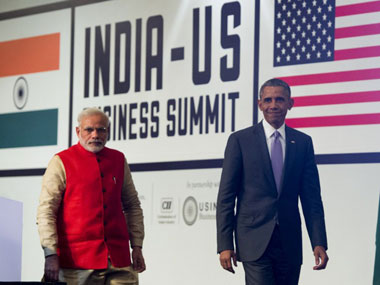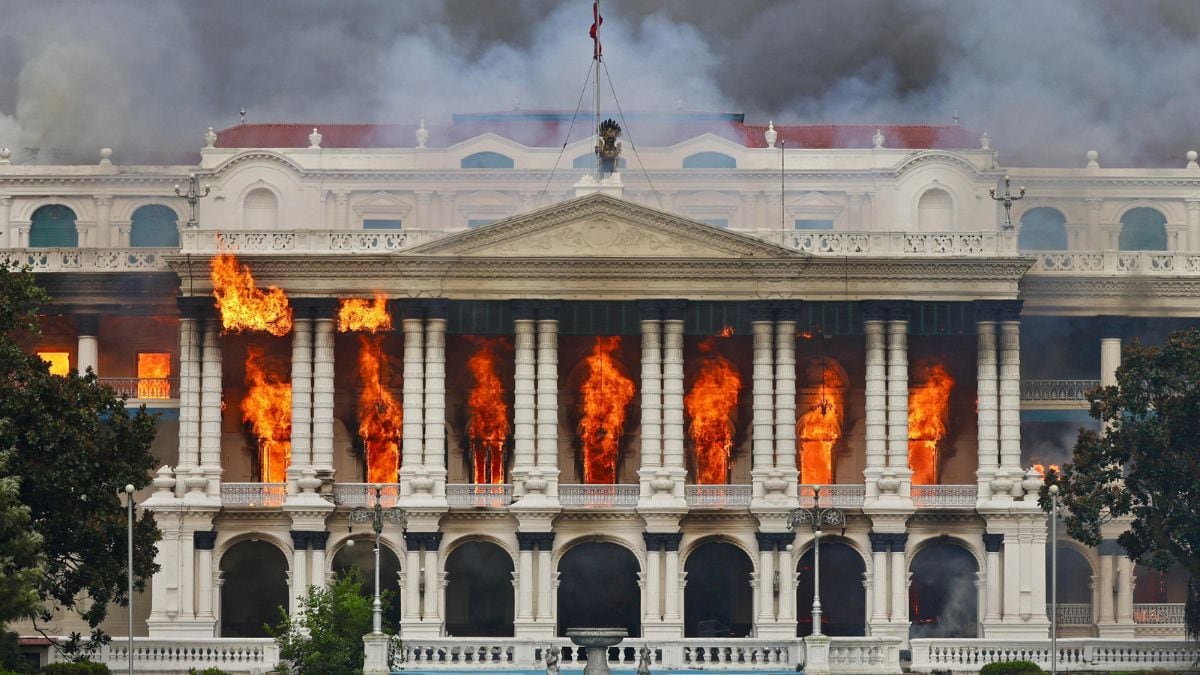After engaging with the US and American allies like Japan pro-actively in the recent past, it is time for the Modi government to turn attention to powers like China. Next few weeks and months are going to see a concerted attempt by the Modi government to touch base with that part of the world which has largely been challenging the American influence. The Narendra Modi government is into its ninth month. All this while it is noted and celebrated for its foreign policy accomplishments. While the past eight months have been an embryonic stage for the Modi government, time has come now for delivery. Thus far, Prime Minister Narendra Modi has had virtually a full view of the international diplomacy and has touched base directly as well as personally with all important leaders of the world. This includes all P5 nations, virtually the entire neighbourhood and many more. [caption id=“attachment_2066631” align=“alignleft” width=“380”]  Narendra Modi with Barack Obama. AFP[/caption] Now the Modi government is all set to begin a new phase of international diplomacy wherein it gets into some very serious business of real politic as well as strategic diplomacy. The Modi government is now coming to a phase where it realizes it has to do some clever balancing. PM Modi has already interacted with all the major foreign policy players of the world who matter for India. His interactions with the leaders of the United States, the UK as well as those from Japan, China and Russia have generated an impression of an India on the move, an India which is being wooed by one and all. This is but natural for a country of 125 billion people and having an economy of $2 trillion. The biggest foreign policy challenge for PM Modi is how to pitch India before the two biggest powers of the contemporary world: US and China. These two foreign powers are at loggerheads with one another and that makes Modi’s task all the more complicated – and difficult. We are living in one of those times when a pertinent question is whether we are closer to the US-led Western world or powers contiguous to us, namely China. It is not a zero sum game and one does not preclude the other – and that is how it should be. Succinctly put, the question is whether we are closer to the US-led system or the Chinese sphere of influence. Veritably this is a new non alignment conundrum facing India today. Ideally, India must not be seen as aligning with any particular international sphere of influence. And this is happening at a time when international diplomacy is on an overdrive, like it has been for the past several years and will be so in the foreseeable future. The world today is divided between two major spheres of influence: America and China. We have to take a call where we stand today, with whom and for what purposes. Indian foreign policy under PM Modi largely remains the same in this regard. PM Modi has exhibited tendencies of engaging pro-actively with the US-led western community by stepping up engagement with not just the Americans but also with powers like Japan, Europe and Australia on the hand and China and Russia on the other hand. Of course India’s immediate nieghbourhood has been the prime focus of India’s foreign policy under the Modi government and meaningful diplomatic reach-out sessions have been done with regard to contiguous neighbours like Bangladesh, Sri Lanka, Bhutan and Myanmar. Pakistan has been a stop-start-stop kind of an engagement in Modi government’s scheme of things. But that has always been so. As long as India manages to keep its engagement with Islamabad under control and does not allow its Pakistan policy to collapse it would constitute a diplomatic success. So far, this template has remained in place. As the Modi government prepares to look around the near abroad and the far abroad, the one country which needs special attention is obviously China. In the next few days, the Modi government prepares to deal with the Dragon in a big way when External Affairs Minister Sushma Swaraj undertakes her maiden official trip to China. New Foreign Secretary S Jaishankar, who has been Indian ambassador in China, will be accompanying her. She will be in China from 1 February to 3 February. During this trip she will inaugurate the second India-China High-Level Media Forum and attend the launch of Visit India Year. She will be meeting the entire Chinese leadership during this trip. More significantly, Swaraj will also participate in the 13th Foreign Ministers’ Meeting of Russia-India-China Trilateral, and will meet Russian Foreign Minister Sergei Lavrov on the sidelines of the meeting. This would mark a new beginning in the Modi government’s engagement with China and also Russia, the two powers that are so intrinsic to the complex Indian foreign policy cauldron. National Security Advisor Ajit Doval is also set to engage with his Chinese counterpart in the coming months in an attempt to resolve the vexed boundary dispute. A few months later Modi would be visiting China for the first time as the Prime Minister. His task would be to convince the Chinese that India is not embracing the US-Japan coalition against China. Instead, India would be working with China as pro-actively as it is doing with the Americans and the Japanese. Swaraj’s China trip would be paving the way for this approach of the Modi government. Needless to say it is going to be a tough and delicate diplomatic balancing act for PM Modi in the coming months. The writer is Firstpost Consulting Editor and a strategic analyst who tweets @Kishkindha.
Now the Modi government is all set to begin a new phase of international diplomacy wherein it gets into some very serious business of real politic as well as strategic diplomacy.
Advertisement
End of Article
Written by Rajeev Sharma
Consulting Editor, First Post. Strategic analyst. Political commentator. Twitter handle @Kishkindha. see more


)

)
)
)
)
)
)
)
)



